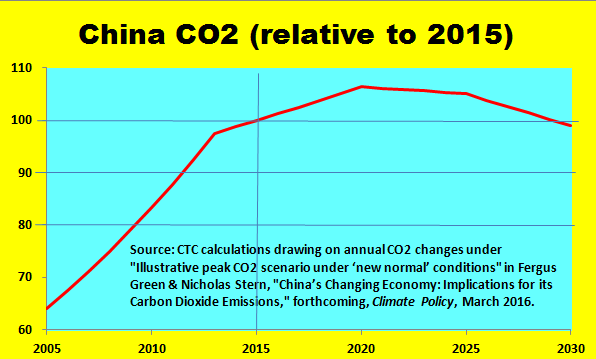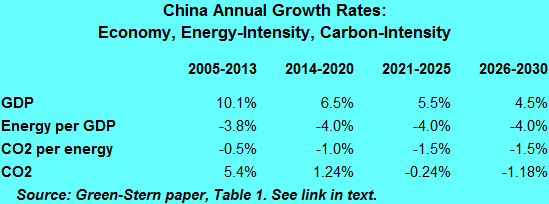I set off a media firestorm in New York City last week.
It was Friday morning, the day after Trump repudiated the Paris Climate Agreement, and Mayor Bill de Blasio was using his weekly “ask the mayor” turn on the popular Brian Lehrer radio show (NPR) to tell New Yorkers “We’re going to step up our game” to address climate change. I called in and the screener put me through as “Charles from Manhattan.” Here’s what I said:
Mayor de Blasio, you spoke eloquently a moment ago about stepping up our game in light of Trump’s withdrawal from Paris. How about you stepping up your game, leading by example, getting out of your SUV armada, and if you need to go to the Park Slope “Y” five days a week, rather than a gym near you, why don’t you take mass transit? Or even once in awhile ride a bike, like the vast majority of your fellow New Yorkers, so you will know how we are suffering under a transit system — yes governed by the governor, not by the mayor — but you need to lead by example.
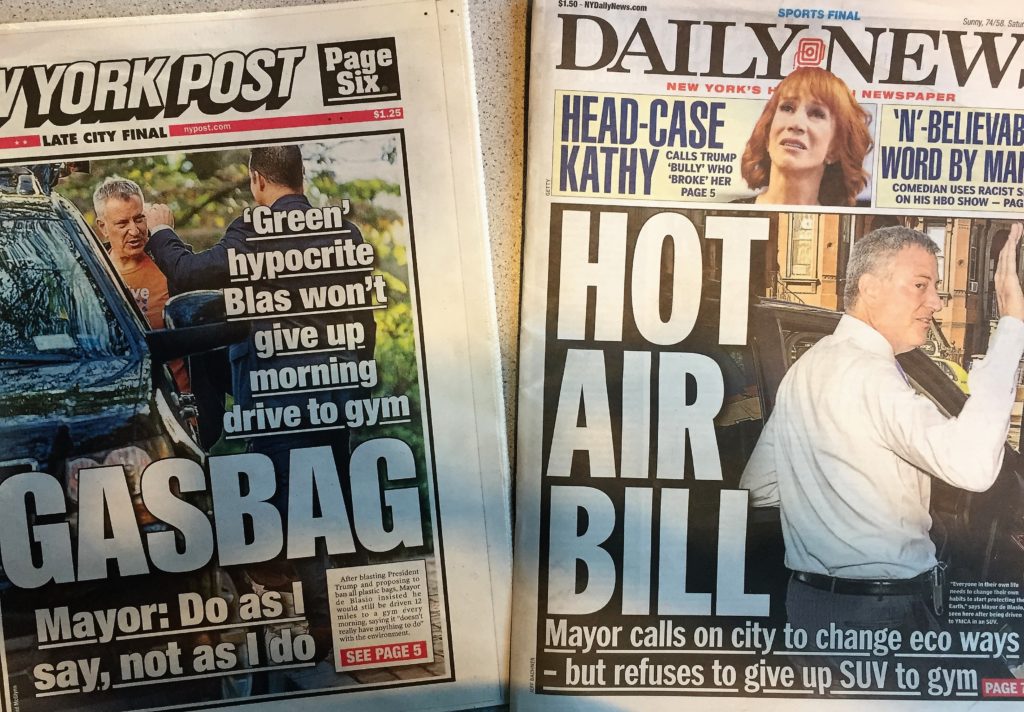
My on-air scolding of NYC Mayor Bill de Blasio last week set off a media firestorm. But his SUV habit reveals deeper failings.
I finished with this:
One of the reasons we are in this climate crisis is because the average person sees elites not playing by the rules that elites seek to impose on everyone else. And you’re not going to be able to lead when you’re sitting in your SUV being chauffeured every day, twelve miles from Gracie Mansion to Park Slope just so that you can ride an exercise bike.
Then it was Mayor de Blasio’s turn. He defended his climate record and called my criticism “cheap symbolism,” as reported by Politico (abridged slightly here):
Charles, I understand the emotional appeal of what you’re saying but I’m just not going to take the bait, my friend.
I have instructed folks in my government to turn our fleet into electric cars. We are moving to renewables, we are retrofitting our buildings, that’s the real leadership — it’s not whether I go to the gym.
Whether I go to the gym does not affect the policies that affect millions of people. I’m going to keep going to the gym. I’m proud to say we have a hybrid. It’s a good car, it’s very fuel efficient. I use the subway when it makes sense to use the subway, and I do stay in touch with what people are going through and I knew it for years and years, because for many years I never had any car.
So it’s easy for you to say that, but it doesn’t really have anything to do with how we change the world. We change the world with policies that affect people and the policies of this city are going to lead to addressing climate change in a much more aggressive way than it’s ever been addressed in the history of New York City.
But again, the issue is not cheap symbolism here. The issue is, are we gonna take action. That’s really the motherlode of addressing emissions in this city. It comes from buildings. We’re going to be very very aggressive about that.
That was that, or so I thought. What I soon learned was that the City Hall media bullpen was going nuts. One of the reporters put my voice together with my first name, and the papers started calling for quotes. By nightfall, their stories were up, with front-page headlines in the Daily News and the NY Post branding the mayor a “green hypocrite” and even the staid New York Times putting my exchange with the mayor at the top of its Metro section.
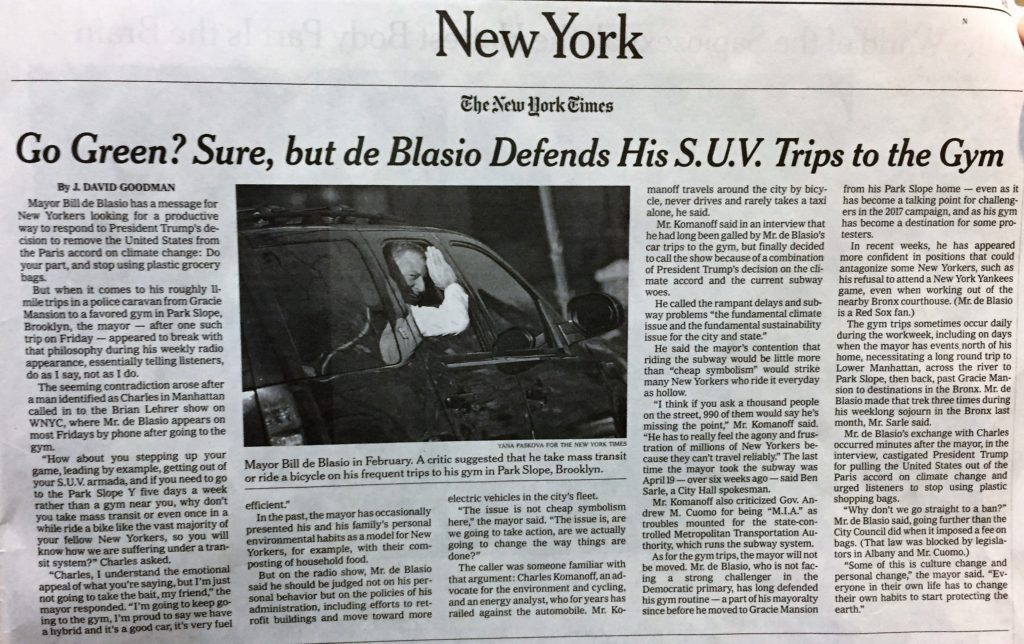
I told The Times that collapsing transit was “the fundamental climate issue and the fundamental sustainability issue for the city and state.” (Link is above pic.)
I was able to go deeper in those interviews. My most-teachable moment came on Saturday. The NY Post was doing a follow-up and I said that transit riders “need a voice and we don’t have one,” when neither the mayor nor the governor rides a subway or bus.
There are levels galore, here. Let’s unpack them.
First, when we quantify the direct carbon consequence from the mayor’s mini-fleet of SUV’s from home to gym, we see it’s really small: just 24 pounds of CO2 per trip, which monetizes to a mere half-a-dollar’s worth of climate damage.
(Burning one gallon of gasoline releases 19.57 lb of CO2, we’ll call it 20 lb. Let’s assume two SUV’s, each averaging 20 mpg, though actual mileage is probably less. They’re going 12 miles, so we get 2 (vehicles) x 20 lb/gal x 1/20 gal/mile x 12 miles, which yields 24 pounds of CO2. In 2015 Pres. Obama directed federal agencies to use a “social cost of carbon” of $37 per ton of CO2, in 2007 dollars; that equates to $44/ton in 2017 dollars, which is just 2.2 cents per lb of CO2. So the mayor’s 24 lb per trip is imposing a direct climate cost of 53 cents (24 lb x 2.2 cents/lb).)
It’s true that the official U.S. cost of carbon (since rescinded by Trump) is a low-balled estimate, but even quadrupling it raises the direct climate cost of the mayor’s tailpipe CO2 to just two bucks — befitting the fact that global CO2 is the end-product of billions of actions that are individually insignificant but collectively fraught.
A second level of costs arises from the spatial impacts from driving in a dense city. These are experienced most acutely as traffic congestion and its attendant time cost. And here I mean not mayoral time lost to traffic (since de Blasio gets to read and talk by phone while being ferried to the gym) but the time his auto trip effectively takes from others on the roads, by virtue of occupying space and slowing them down.
As long-time subscribers to this blog may know, I’ve done a lot of analysis of traffic congestion costs in New York City, even to the point of quantifying the time costs from a single additional trip in or near the city’s Manhattan core. This analysis is embedded in the kaleidoscopic spreadsheet I maintain to model “congestion pricing” for New York (download here, Excel required; go to Delays and Delay-Costs tabs) but more conveniently summarized in Time Thieves, an article I wrote a half-dozen years ago with then-Princeton student Will Fisher.
The takeaway for our purposes is that a single mile driven by just one vehicle during ordinary congested conditions in or near Manhattan slows down other vehicles by a combined 8 or 9 minutes (think of it as hundreds of vehicles delayed by a few seconds each). Factoring that by the 24 miles in the mayor’s ride to the gym (12 miles by 2 vehicles), the cars, trucks, cabs and buses in the mayor’s “traffic field” are absorbing an aggregate slowdown of 3 to 4 hours. By any reasonable estimate of the average value of time of those vehicle users, the aggregate cost of the time taken from them by each mayoral ride from his residence to his gym is easily in excess of a hundred dollars.
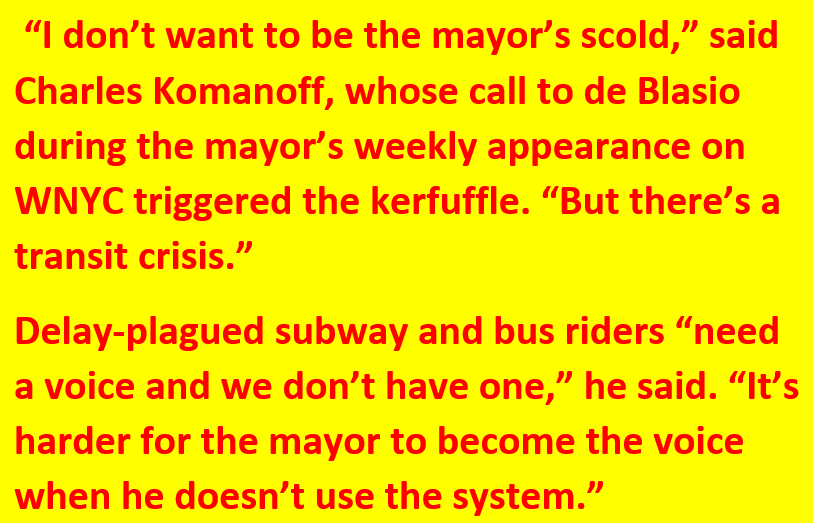
I told fellow New Yorkers via the NY Post that vulnerable mass transit undermines our city’s sustainability.
That’s two orders of magnitude greater than the direct carbon cost per trip — indicative of the fact that traffic congestion manifests as an inefficiency problem far more than as a climate problem, at least directly. It also demonstrates that the mayor’s (or any other New York car user’s) promise to switch to an electric vehicles won’t put a dent in the societal costs of driving in a congested metropolis.
Yet even those several hours of extra congestion dissolve into insignificance in a city of 8.5 million people and 2 million registered vehicles. The crux of the matter — which I tried to telegraph in my radio remarks but didn’t really nail until that second NY Post interview the next day — is found in this syllogism:
- New York City is inherently green by virtue of its urban density. This idea was most lucidly distilled by the writer David Owen in his 2009 book, Green Metropolis. Density both facilitates and enforces shorter trips, non-automobile travel, and compact and contiguous living and working spaces, all of which translate directly into smaller carbon footprints.
- What makes this density possible is our mass transit (subway) system. But it is deterioriating from insufficient investment in equipment and maintenance. (The local press corps is all over this; see for example these vivid stories last month by The Times’ Emma Fitzsimmons, 1 and 2.)
- Politicians are ignoring this crisis. Neither NY State Gov. Andrew Cuomo, who controls the state-chartered Metropolitan Transportation Authority, nor Mayor de Blasio, who has a voice in running the MTA along with a bully pulpit to call out problems and demand solutions, has stepped up to take responsibility. Neither of them ever rides a subway or bus, except in a photo-op.
It’s safe to say that Mayor de Blasio isn’t steeped in this logical chain connecting density, transit and leadership. For evidence, look no further than the end of his radio rejoinder to my harangue, in which he called the city’s building stock the “motherlode” of emissions and, thus, his climate focus. While it’s true that heating and powering the city’s offices and apartments generates a good deal more CO2 than fueling our cars and trucks, that’s because extensive and efficient mass transit keeps down automobile use. Take that away — as the governor and mayor are effectively doing by turning their backs as the subways fall apart — and transportation emissions will surely rise.
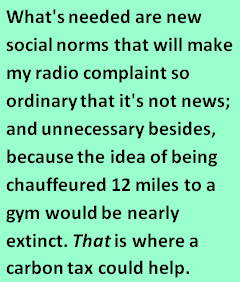 But the stakes are higher still. Low-CO2 NYC can’t grow or even maintain its current population without reliable and humane transit. Businesses and families won’t suffer a city dependent on undependable transit and will locate in less inherently-green cities or suburbs instead. And while in theory leaders could care enough about transit to make it work even if they never stepped onto a train or bus, ours have shown no inclination to do so in their combined decade in office (6.5 for Gov. Cuomo, 3.5 for Mayor de Blasio).
But the stakes are higher still. Low-CO2 NYC can’t grow or even maintain its current population without reliable and humane transit. Businesses and families won’t suffer a city dependent on undependable transit and will locate in less inherently-green cities or suburbs instead. And while in theory leaders could care enough about transit to make it work even if they never stepped onto a train or bus, ours have shown no inclination to do so in their combined decade in office (6.5 for Gov. Cuomo, 3.5 for Mayor de Blasio).
Maybe the only way the situation gets turned around is if each of them is stuck on a jammed, sweltering, subway … or is forced to wait on a packed platform as the minutes tick and the tension mounts. And not just once, but again and again.
That, in a nutshell, is why I called up and berated the mayor. As I told The Times, I’d been pondering it for weeks. The combination of Trump’s craven Paris announcement and the mayor’s wrapping himself in the mantle of climate savior gave me an opening and also pushed me over the edge.
I’ll close with a bit of irony inspired by Nicole Gelinas, the trenchant urban affairs analyst at the Manhattan Institute and New York Post columnist. In her Monday column, Bill de Blasio is a climate change hypocrite, she noted:
People will use less carbon — eventually — not because they’re nice, but because it will be more expensive. The world’s governments could achieve this effect more quickly through a carbon tax. Why not get it over with now? Because it’s too hard, politically and practically, to change people’s behavior by making them pay the full purported cost of carbon — that is, asking you to pay for next decade’s hurricane with your gas purchase today. (emphasis added)
Yes and no. Enacting a carbon tax is hard, but not necessarily impossible. But in this case, as we’ve seen, even a stiff carbon tax wouldn’t impel de Blasio to switch to subway from SUV; and that’s probably true even if he were paying for the ride from his own pocket.
What’s needed are new social norms that will make my radio complaint so ordinary that it’s not news; and unnecessary besides, because the idea of being chauffeured 12 miles to a gym would be nearly extinct. That is where a carbon tax would help.

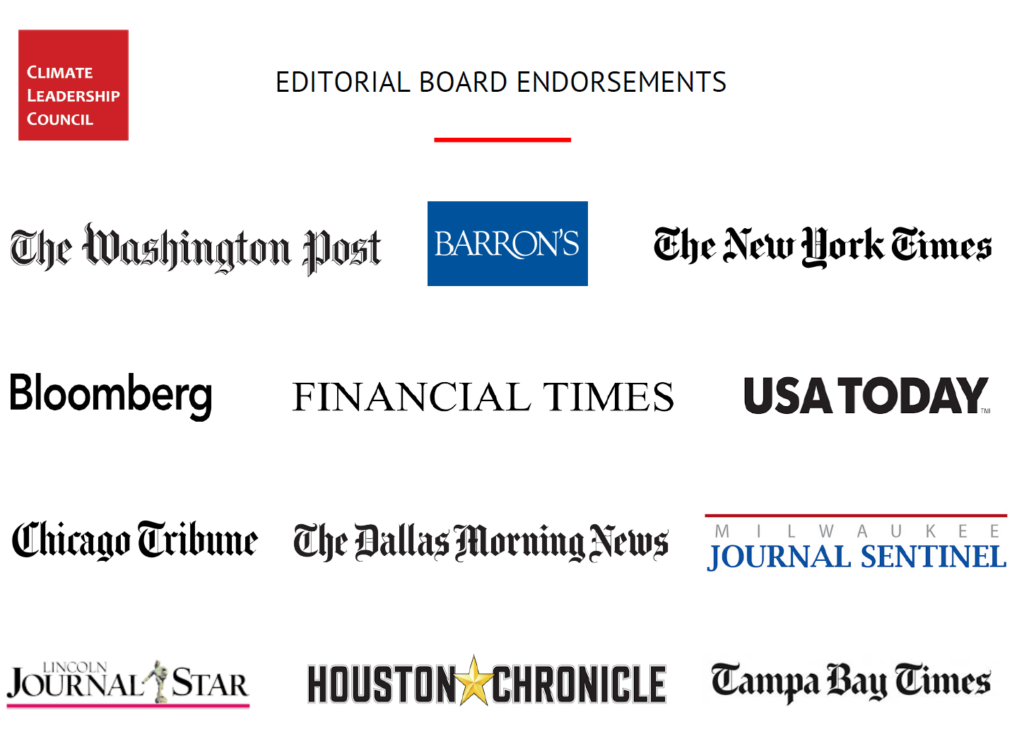
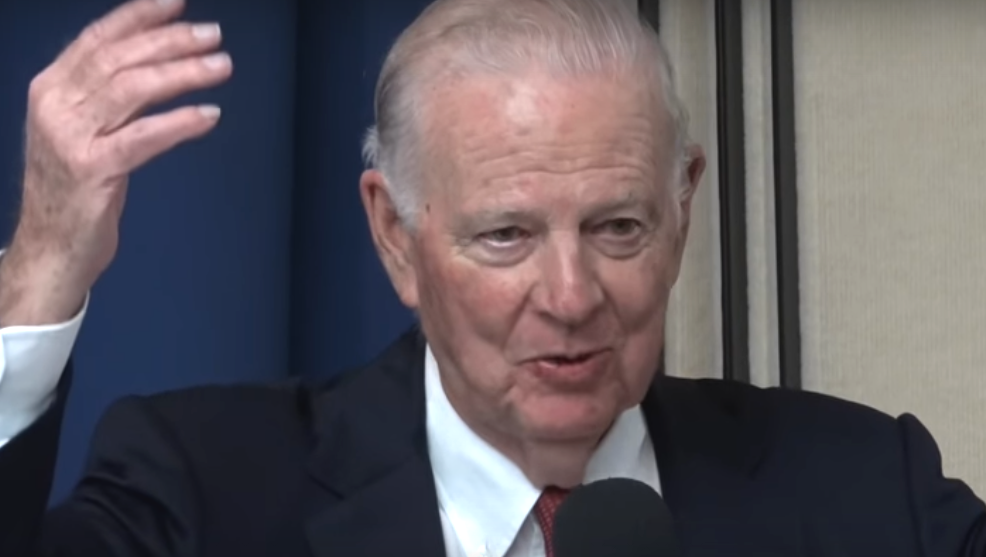
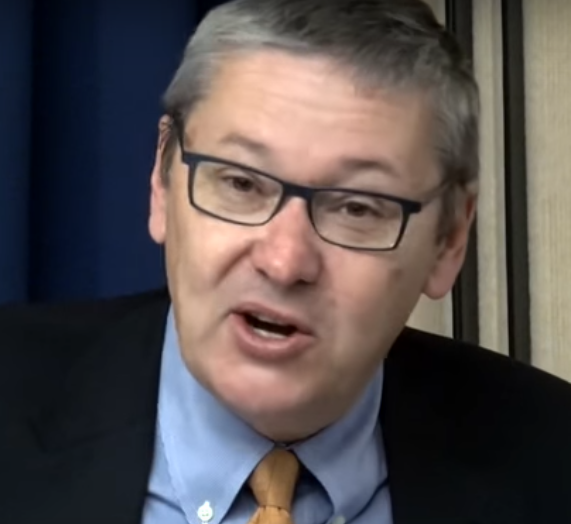
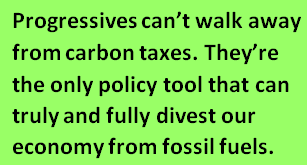 Our long-building climate crisis is already materializing as drowned coasts, punishing droughts, vanishing glaciers—and political upheaval. At its root is a century-old lie: market prices for gasoline and other fossil fuels that do not factor in the damage from burning them.
Our long-building climate crisis is already materializing as drowned coasts, punishing droughts, vanishing glaciers—and political upheaval. At its root is a century-old lie: market prices for gasoline and other fossil fuels that do not factor in the damage from burning them.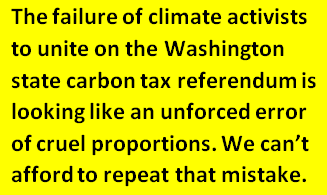 But government policy revolves around trade-offs, and on balance the Council’s carbon tax is worth supporting. After all, well over 80 percent of the Clean Power Plan’s targeted reductions for 2030
But government policy revolves around trade-offs, and on balance the Council’s carbon tax is worth supporting. After all, well over 80 percent of the Clean Power Plan’s targeted reductions for 2030 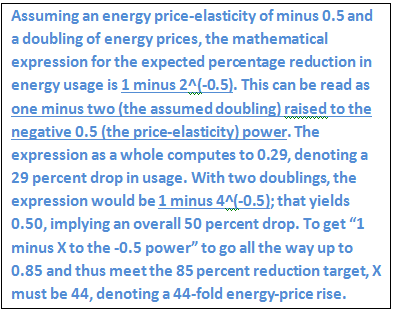
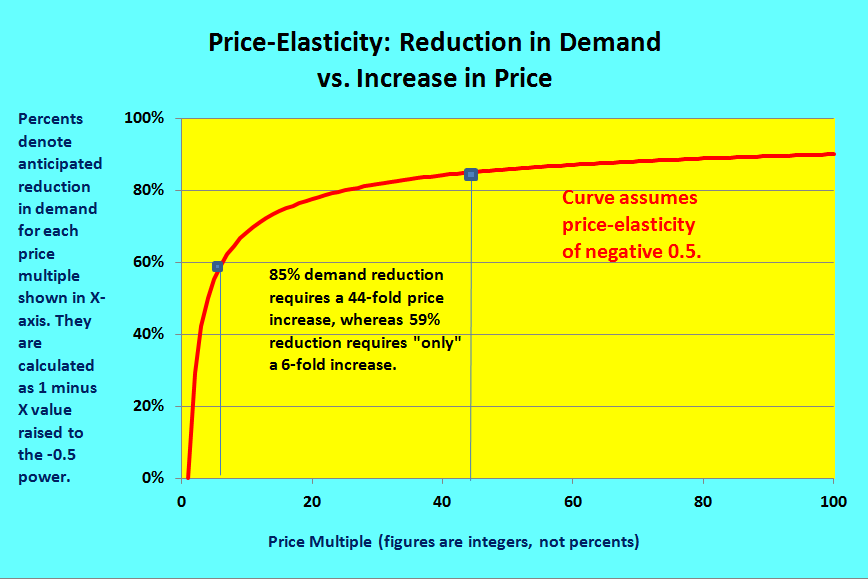
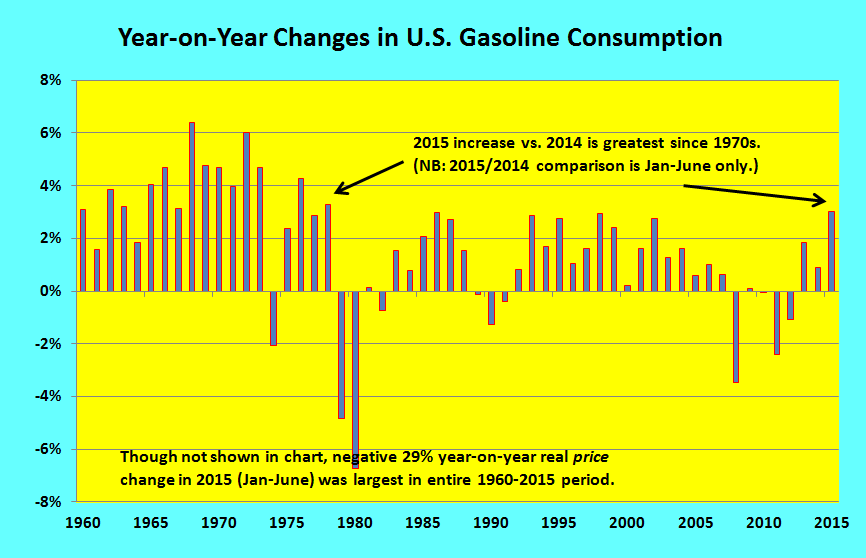
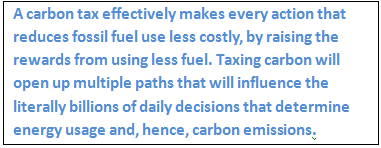
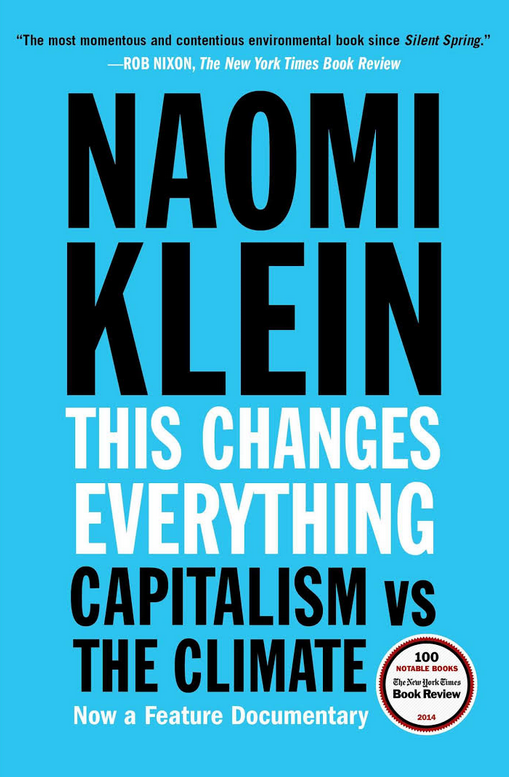
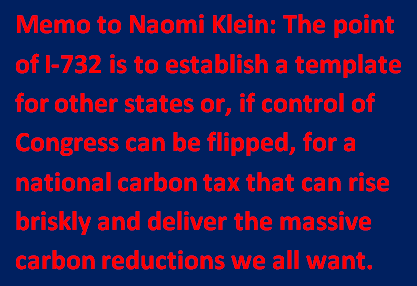 CTC: Klein’s math is off; by 2040, the tax-caused rise in gasoline prices would be 25 percent. But the bigger point she ignores is that a carbon tax in any one state like Washington (or a lone province like British Columbia) can’t be set high because of interstate competitive pressures — which is also why I-732 sets aside 10-15 percent of its revenues for tax reductions for businesses like Boeing. The whole point of the Washington state initiative is to establish a template for other states or, if control of Congress can be flipped, for a national carbon tax that can rise briskly and deliver massive carbon reductions, as we noted in a
CTC: Klein’s math is off; by 2040, the tax-caused rise in gasoline prices would be 25 percent. But the bigger point she ignores is that a carbon tax in any one state like Washington (or a lone province like British Columbia) can’t be set high because of interstate competitive pressures — which is also why I-732 sets aside 10-15 percent of its revenues for tax reductions for businesses like Boeing. The whole point of the Washington state initiative is to establish a template for other states or, if control of Congress can be flipped, for a national carbon tax that can rise briskly and deliver massive carbon reductions, as we noted in a 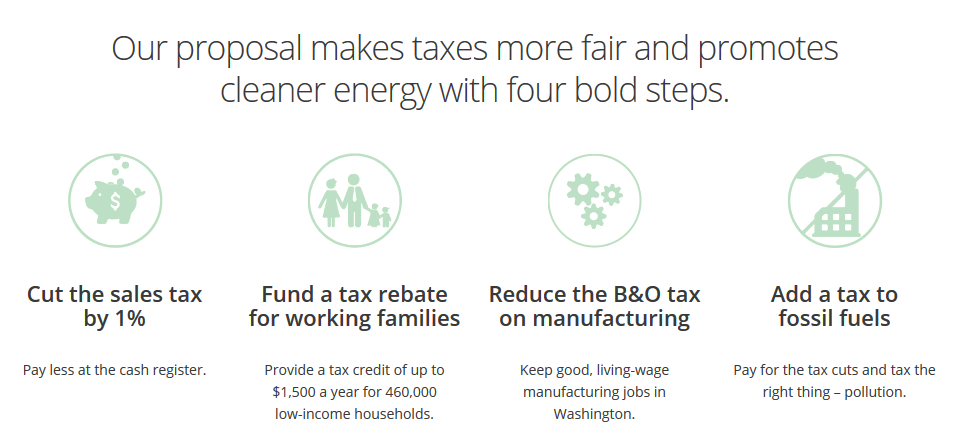
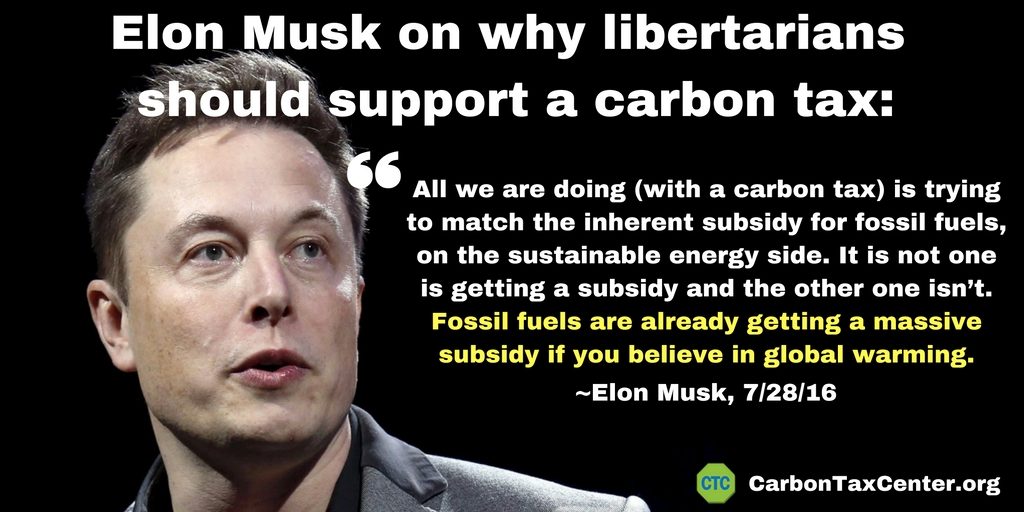 In Nevada, Musk also spoke up for carbon taxes, though hardly for the first time. Four years ago, for example, at the Wall Street Journal’s ECO:nomics conference in Santa Barbara, CA, Musk disparaged tax credits for green cars and declared that “the best method for addressing climate change in the automotive industry is to impose a tax on carbon dioxide emissions,” according to the trade journal
In Nevada, Musk also spoke up for carbon taxes, though hardly for the first time. Four years ago, for example, at the Wall Street Journal’s ECO:nomics conference in Santa Barbara, CA, Musk disparaged tax credits for green cars and declared that “the best method for addressing climate change in the automotive industry is to impose a tax on carbon dioxide emissions,” according to the trade journal 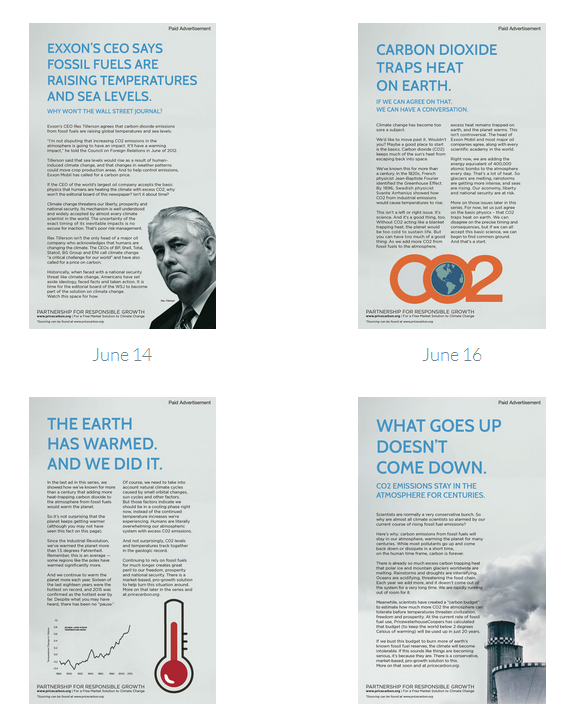
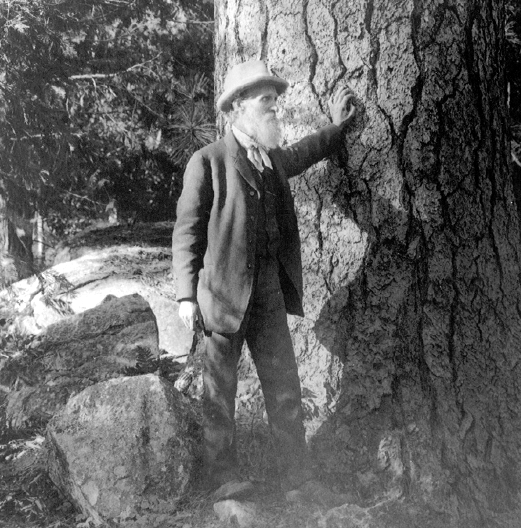
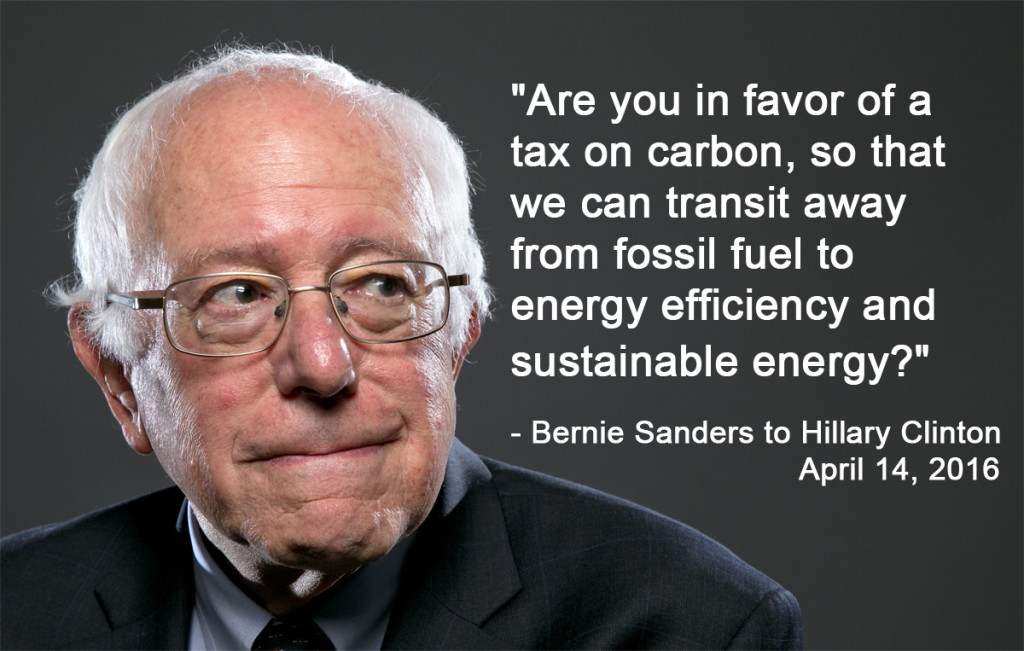 Not right now. Not on climate change. Now, the truth is, we have got to tell the fossil fuel industry that their short-term profits are not more important than the future of this planet. And that means — and I would ask you to respond. Are you in favor of a tax on carbon so that we can transit away from fossil fuel to energy efficiency and sustainable energy at the level and speed we need to do?
Not right now. Not on climate change. Now, the truth is, we have got to tell the fossil fuel industry that their short-term profits are not more important than the future of this planet. And that means — and I would ask you to respond. Are you in favor of a tax on carbon so that we can transit away from fossil fuel to energy efficiency and sustainable energy at the level and speed we need to do?